If you were to study your instrument, visually look at it, you may notice at specific places between a key and the body of the instrument or in between keys that contact each other there is a bit of some sort of material. This could be cork, it could be felt, or it could be one of a variety of synthetic materials. These little bits of material perform important functions for the instrument. They are often referred to as key silencers, but their jobs can be so much more than that.
What’s in a name?
To begin, we first have to be in relative consensus on what to call these things. One term you do NOT want to use to describe these components is pads. All the time I get people contacting me saying “a pad fell off”. As you know from reading my series All About Pads, if a pad falls off it will render the instrument inoperable to a certain extent. When I hear this I immediately go into emergency damage control mode and try to figure out where i can fit the person in the schedule and what complications could have contributed to a pad falling out. But 99.9% of the time it was not a pad that fell off, but a little bit of cushioning. Please do not refer to the little bits of cork or felt located away from the toneholes as “pads”.
Acceptable terms for these little bits of material could be key corks, key felts, key bumpers, key silencers, or even regulation material. For brevity I will use the term key cork to refer to all applications and materials.
Two —wait… 3 Functions of Key Corks
One function of the key corks is to establish the amount a key opens. There are acoustic phenomena I will not get into here, but suffice it to say if keys do not open enough or open too much there can be adverse effects on the instrument’s performance. The thickness of the key cork is a large contributor to how much a key opens. These corks are usually located on their own at the end of a key and often have little contact with or reliance on what other keys are doing. Every now and then there are corks with such function that are contained within a complex mechanism, relying on the movement and shape of other keys to do their job, such as saxophone octave mechanisms from the early 20th century.
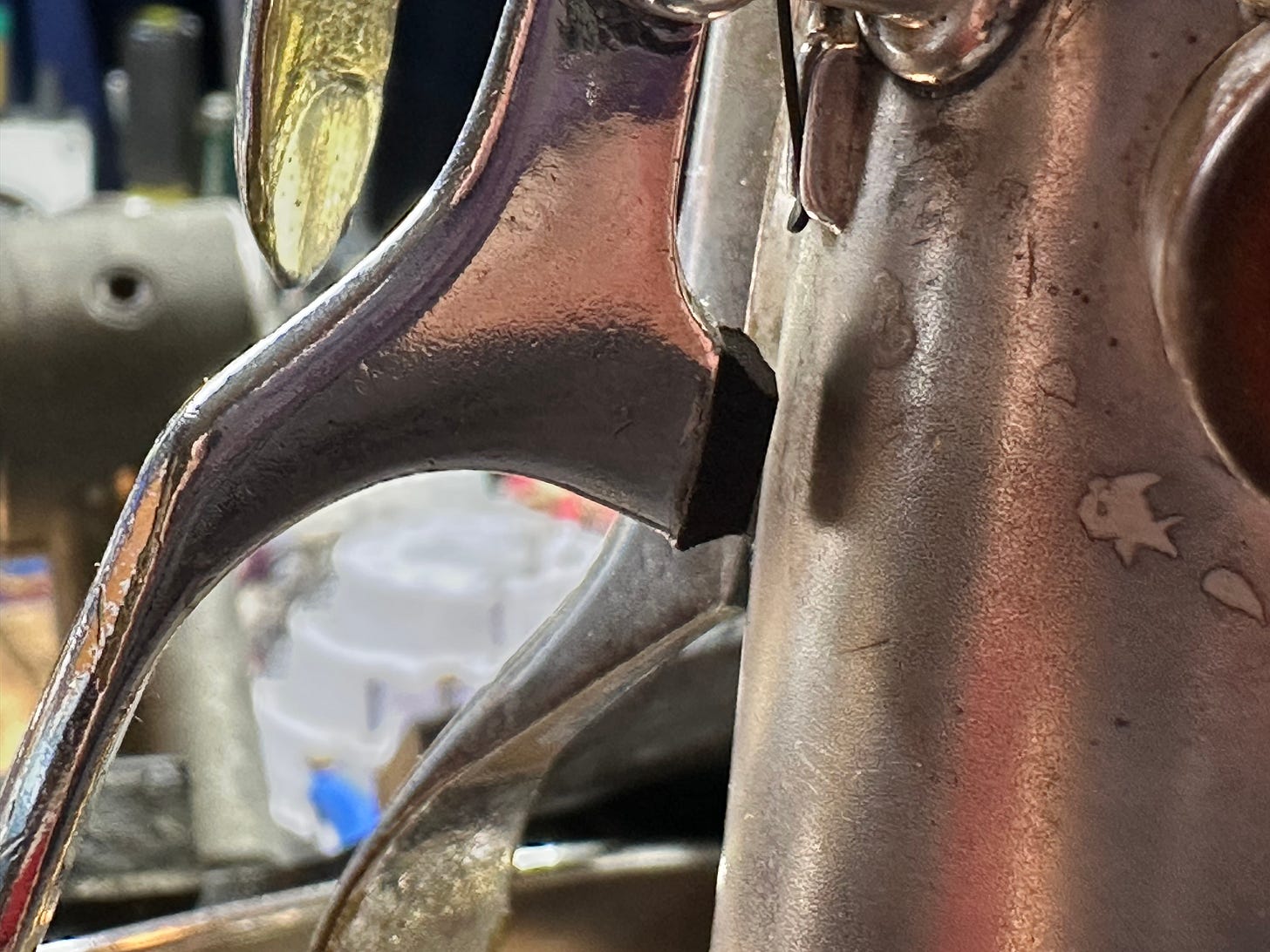
These corks are largely known for their second function, which is to prevent hard surfaces of the key from clicking against the body of the instrument. In most cases if one of these corks falls off it’s not the end of the world. It can certainly be an annoyance but it is unlikely to prevent the instrument from functioning. In an emergency, such as a recording session where having a clicky key is unacceptable, you can assemble a stack of small pieces of masking tape and stick it to the body of the instrument under the clicking key foot.
The third function of key corks is regulation or timing. In every woodwind instrument of modern design there are places where multiple keys must move and close together. If you examine your instrument as you are moving the keys you will see some keys moving that you never physically touch. On flute or saxophone if you press the F key the F# key right above it moves. On clarinet consider the thumb ring and the LH1 key. On oboe or bassoon… well, close your eyes and point and you’re likely to point at a key that is regulated to another.
If a regulation cork comes off, it can be very difficult to replace properly with out some instrument disassembly. Many players reach for the superglue to try to reattach the cork, but this almost always results in embarrassment or tears.
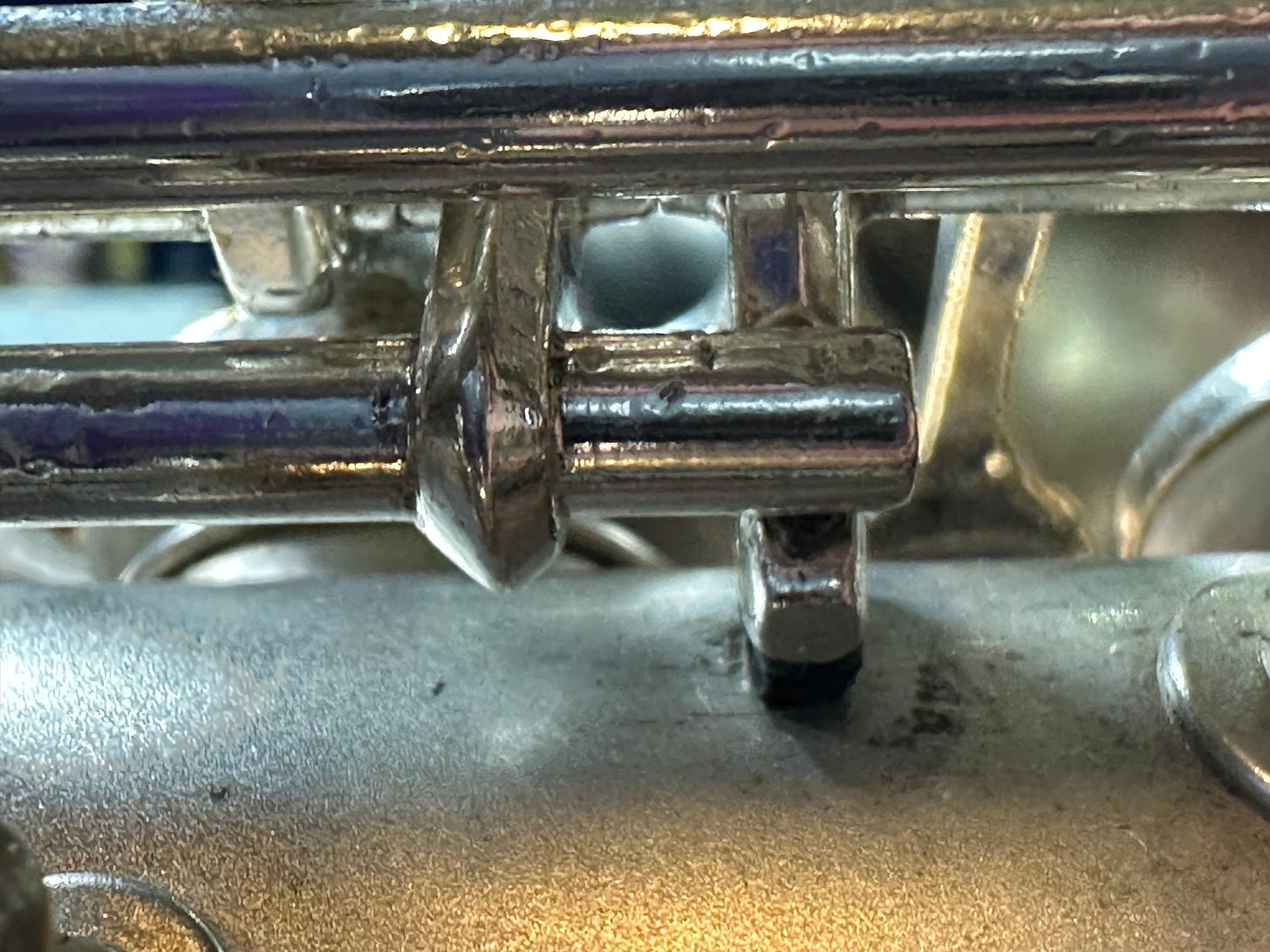
On many instruments there are adjustment screws that stand in for precise regulation corks. The existence of adjustment screws should not be seen as a positive or negative feature on its own. It is just another approach to accomplishing the goal of one key moving another precisely. Adjustment screws could be highly precise or they could be sloppy and limited. Likewise, the application of a “hard” connection with a key cork rather than an adjustment screw could be incredibly precise or be problematic. It all depends on the application and the design of the mechanism.
The Grand Compromise
There is a big compromise to be had with key corks. People tend to expect the action of their instrument to be perfectly silent with their ear placed 6 inches away. This is an unreasonable expectation. While there should not be metallic clicks emanating from your instrument, complete silence is one of those unattainable goals. We can get close, but this is where the compromise comes in.
Woodwind instruments are precision-made machines. As instruments increase in quality the level of precision goes up. When we pay tens of thousands of dollars for a highly precise instrument we want to take full advantage of that precision that made it cost so much. Key corks (or whatever material is used) is very imprecise in comparison. We can improve the key cork’s dimensional precision by choosing material with more density — a harder or more firm material — but that harder material will inherently add more noise when the cushioned surface contacts its stop.
So it is a perennial battle between noise and precision. If you want it quieter, you will be potentially sacrificing how solid the action on your instrument feels (some people like a squishier feel, most do not). This is the compromise.
A number of years ago one of my colleagues (Eric Satterlee) gave a repair clinic and talked about a “corkless/feltless” regulation process he was working on for saxophones. The process relied on inserts of small diameter neoprene cord installed into the keys at the crucial points. The neoprene cork used in this process is not considered a “soft” material and the concern was it would be too noisy.
I have used the process on many saxophone overhauls over the years and I like it a lot. It is highly precise, extremely durable, and not appreciably louder than most other alternative materials that would be used. It has limited application due to many saxophone key shapes, but is great on old Bueschers. I have even employed the process on some clarinet bridge keys over the years.
Material Density and Resiliency
Materials for key corks can be on a range from soft to firm depending on the need. Generally, the softer materials are less resilient. This means they are more likely to either compress or break down more quickly. If a key cork compresses then there are 2 concerns. First, the compression means the key cork is thinner and the key is opening farther than originally intended. Pitch derivation will probably not be noticed, but if the key in question was part of a stack of keys, such as the right hand keys of a saxophone or flute, if a key cork compresses and its neighbor doesn’t, you’ll feel it under your fingers. The second concern is is the material compresses then it is getting more firm and possibly more noisy.
Thickness of material is also a concern. If a much thicker key cork is needed in a certain place it is likely to feel completely different and be problematic for the tech to balance the feel. When thicker key corks are needed techs will often laminate different densities of material or apply a layer of bumper material to the place the key contacts the body of the instrument.
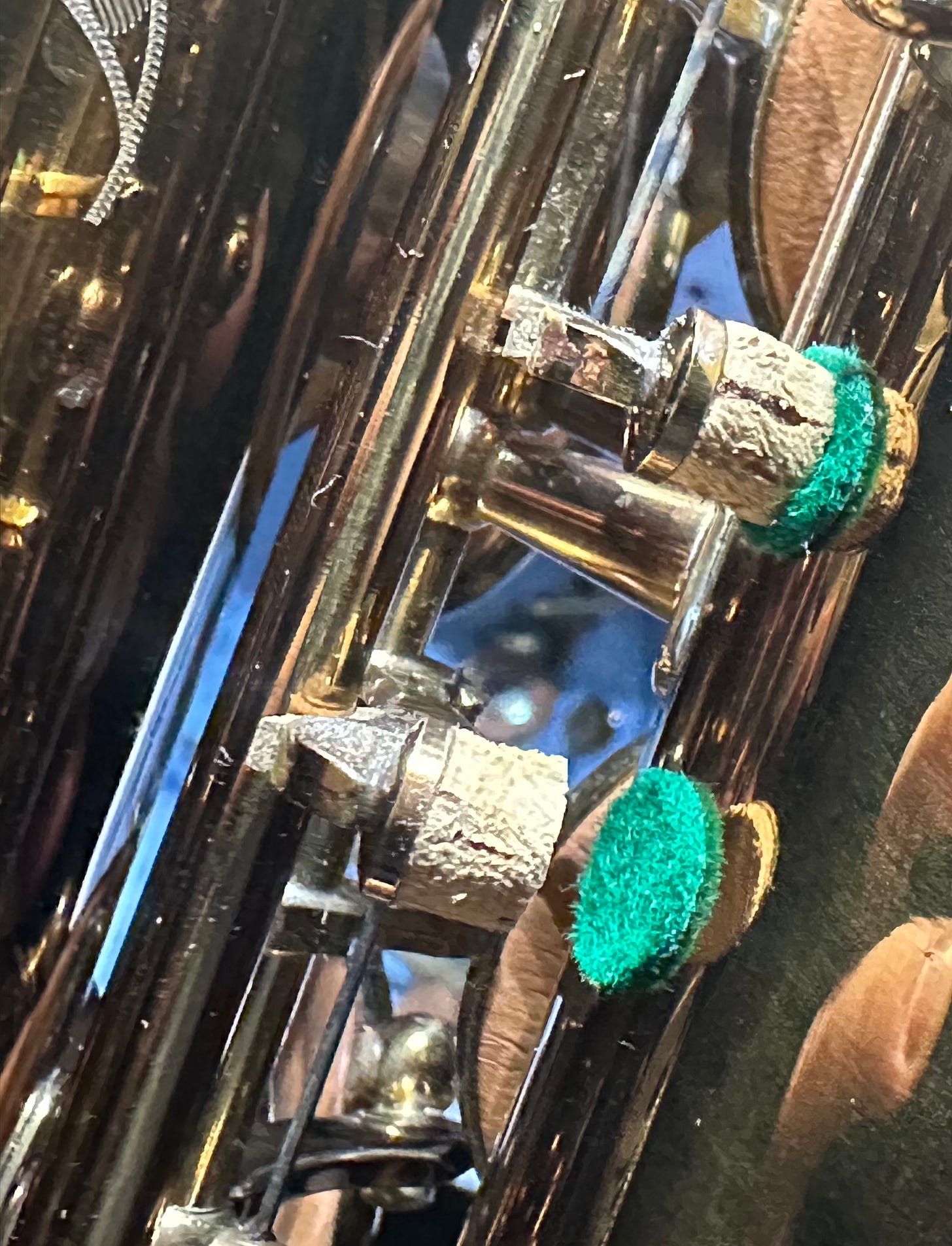
Where density of material really matters is in the regulation adjustments. Whenever possible, the regulation material should be firmer than the pad composition. If the regulation material is softer than the pad then a positive feel in the regulated keys will never be attained. There will always be a second squish in there. Some people do not notice this under their fingers, but for others it can drive them up the wall.
Regulation material should also be as thin as is reasonably possible for the job. It is common on saxophones and larger clarinets to have room between keys for some fairly chunky material. Often this copious room is due to something being bent and it is a mistake to use thicker material for regulating those keys.
The Materials We Use
Natural cork is probably the most widely used material. It is resilient, plays nicely with a wide variety of adhesives, and sands well. It can be a bit on the delicate side compared to other materials and is subject to compression.
Composite cork (also marketed as gummikork or techcork) is a blend of cork and rubber. This material is extremely durable and dimensionally stable, but it is also among the firmest of the materials commonly used and can be noisy. It is available in a wide variety of thicknesses which is good because it is very challenging to sand to a modified thickness.
Natural felt has long been used as a key silencer with some of the favorite fibers being bison, camel, beaver, and rabbit. Felt can be challenging to profile correctly and can be fairly fussy about which glue is used. Felt is often used where quiet action is desired, but the softer felts that provide this will compress much more quickly than other materials.
Synthetic felt of various types has been popular in the 21st century. It has similar qualities to natural felt with a little more dimensional stability over time. It also tends to be reasonably priced from band repair suppliers.
Synthetic cork is a product sold by one of our suppliers which I like a lot and use more than anything else. Structurally it is very similar to natural cork, but will not degrade over time. In addition, it comes in multiple densities for use in different applications.
Scott felt (or scott foam) is/was a marvelous material, perhaps the most perfect key cork material to date. It had the unique combination of qualities of being dimensionally stable, sustaining very little compression over time, and providing almost silent key action. It used to be the mainstay of many handmade flute shops until it was discovered it would break down after a period of years and get sticky (not a quality that is beneficial). Most shops have abandoned it, but there are a few small flute makers still using it who know to change all of the key corks out at each COA.
At the Woodwindfixer’s Bench is a publication of Jeff’s Woodwind Shop, a professional woodwind repair shop in Baltimore, MD. Summer repair openings are now up for grabs. Visit www.woodwindfixer.com to schedule an appointment or to learn more about Jeff’s services.




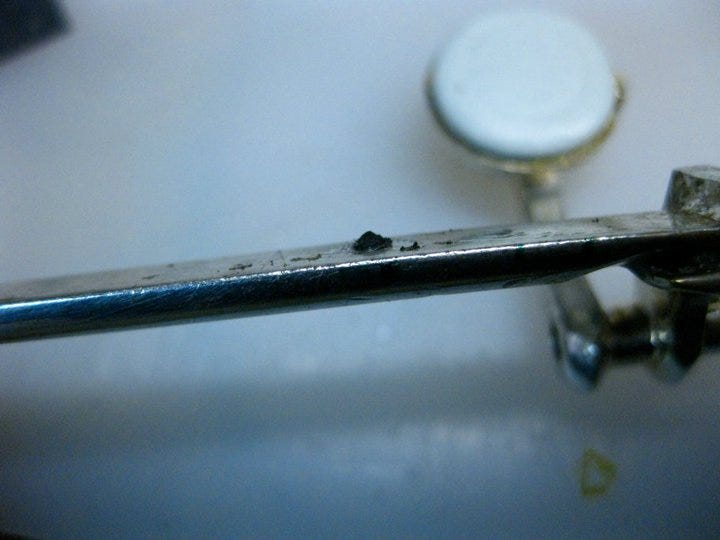
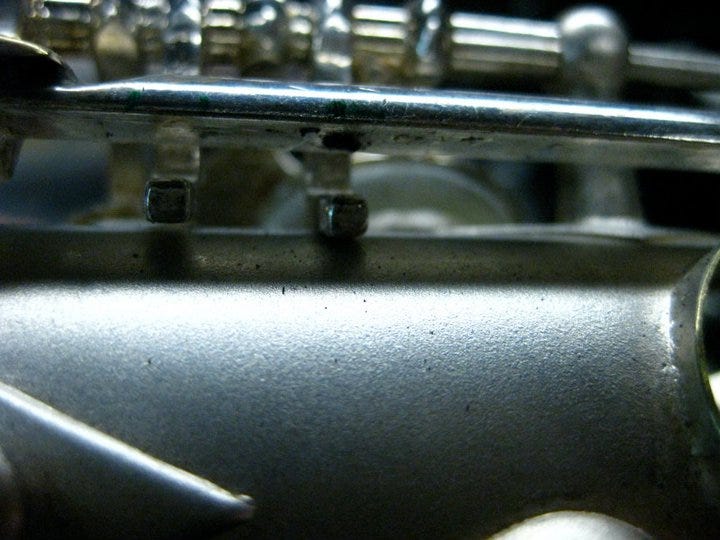

How do key corks affect key bounce? Is there a relationship between spring tension and bumper material?